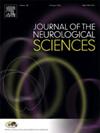Effects of rhythmic-cued gait training on gait-like task related brain activation in people with multiple sclerosis
IF 3.6
3区 医学
Q1 CLINICAL NEUROLOGY
引用次数: 0
Abstract
Background
Walking impairment is one of the most debilitating symptoms of multiple sclerosis (MS). A better understanding of brain mechanisms underlying successful gait training could help to improve development of targeted therapy. We therefore investigated changes in brain activation associated with improvements in walking function after rhythmic-cued gait training.
Methods
Thirty-one people with MS (pwMS; median EDSS = 2.5, range:2.0–5.0) and 17 age- and sex-matched healthy controls (HC) completed behavioural and MRI assessments at baseline and post-intervention (four weeks after baseline). All included pwMS received a four-week actual and/or imagined gait training with rhythmic-auditory cueing, while HC received no intervention. All participants performed a bipedal ankle plantar- and dorsiflexion and a corresponding motor-imagery task during fMRI. PwMS displaying a > 5 % walking distance increase in the 2-Minute Walk Test (2MWT) from baseline to post-intervention were defined as responders.
Results
Responders did not differ from non-responders in terms of demographics, clinical variables, and walking function at baseline. Responders, non-responders, and HC showed similar movement-related brain activation at baseline. At post-intervention, responders showed decreased brain activation within the premotor cortex, precuneus, and middle frontal gyrus during the movement task. Stronger decreases within these areas were associated with higher walking function improvements in all pwMS after controlling for potential confounders. No association was observed between walking function and motor imagery-related brain activation changes.
Conclusion
Improved walking function after rhythmic-cued gait training was associated with reduced brain activation in motor planning and attention areas. This suggests a more efficient recruitment of areas subserving motor function after successful training.
节律性提示步态训练对多发性硬化症患者类步态任务相关脑活动的影响
背景:行走障碍是多发性硬化症(MS)最衰弱的症状之一。更好地了解成功的步态训练背后的大脑机制有助于改善靶向治疗的发展。因此,我们研究了节律性步态训练后与行走功能改善相关的脑激活变化。方法31例多发性硬化症患者(pwMS;EDSS中位数= 2.5,范围:2.0-5.0)和17名年龄和性别匹配的健康对照(HC)在基线和干预后(基线后四周)完成了行为和MRI评估。所有纳入的pwMS患者都接受了为期四周的有节奏听觉提示的实际和/或想象步态训练,而HC患者则没有接受任何干预。在fMRI期间,所有参与者都进行了双足踝关节、足底和背屈以及相应的运动成像任务。PwMS显示>;2分钟步行测试(2MWT)从基线到干预后步行距离增加5%被定义为应答者。结果应答者与无应答者在人口统计学、临床变量和基线行走功能方面没有差异。反应者、无反应者和HC在基线时表现出相似的运动相关脑激活。在干预后,反应者在运动任务中表现出运动前皮层、楔前叶和额叶中回的大脑激活减少。在控制了潜在的混杂因素后,这些区域更强的减少与所有pwMS中更高的行走功能改善有关。行走功能与运动图像相关的大脑激活变化之间没有关联。结论节律性步态训练后行走功能的改善与运动规划区和注意区的脑激活降低有关。这表明在成功的训练后,服务于运动功能的区域得到了更有效的补充。
本文章由计算机程序翻译,如有差异,请以英文原文为准。
求助全文
约1分钟内获得全文
求助全文
来源期刊

Journal of the Neurological Sciences
医学-临床神经学
CiteScore
7.60
自引率
2.30%
发文量
313
审稿时长
22 days
期刊介绍:
The Journal of the Neurological Sciences provides a medium for the prompt publication of original articles in neurology and neuroscience from around the world. JNS places special emphasis on articles that: 1) provide guidance to clinicians around the world (Best Practices, Global Neurology); 2) report cutting-edge science related to neurology (Basic and Translational Sciences); 3) educate readers about relevant and practical clinical outcomes in neurology (Outcomes Research); and 4) summarize or editorialize the current state of the literature (Reviews, Commentaries, and Editorials).
JNS accepts most types of manuscripts for consideration including original research papers, short communications, reviews, book reviews, letters to the Editor, opinions and editorials. Topics considered will be from neurology-related fields that are of interest to practicing physicians around the world. Examples include neuromuscular diseases, demyelination, atrophies, dementia, neoplasms, infections, epilepsies, disturbances of consciousness, stroke and cerebral circulation, growth and development, plasticity and intermediary metabolism.
 求助内容:
求助内容: 应助结果提醒方式:
应助结果提醒方式:


